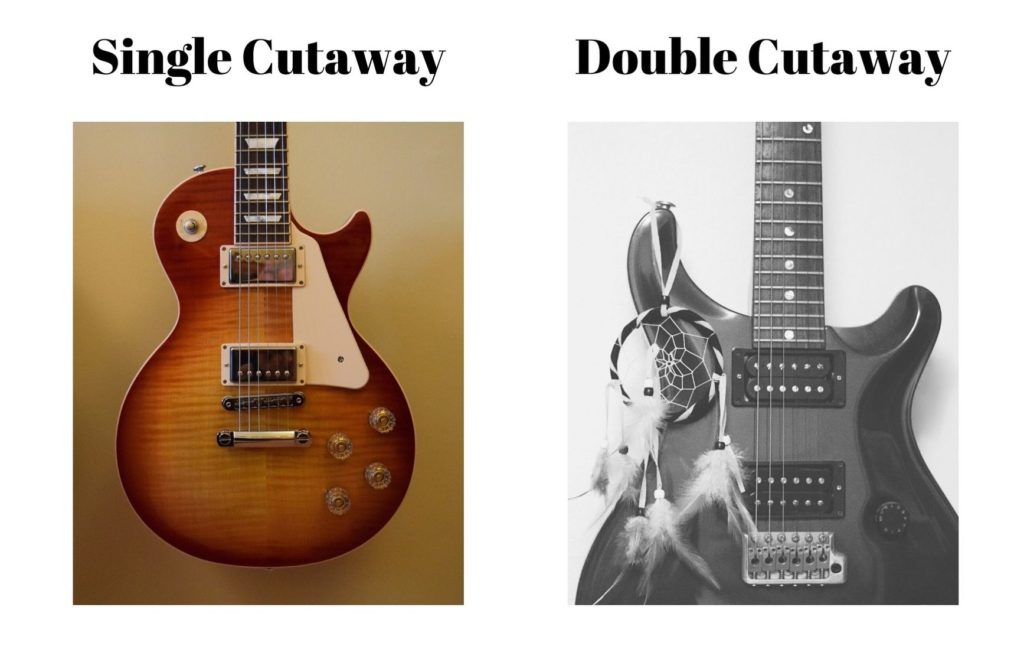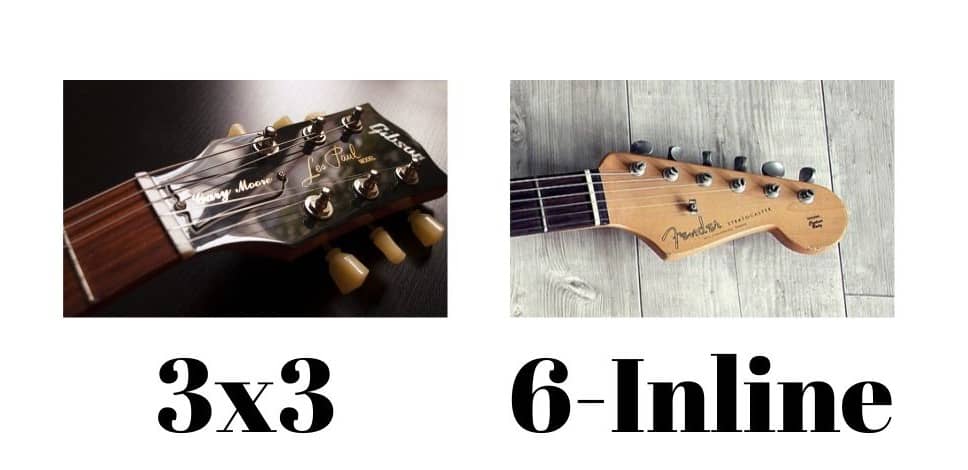Guitars come in so many shapes and sizes, but how much does it actually matter? Besides the look of the guitar, what else does the shape affect?
In this article, I’ll go through exactly why the shape of a guitar’s body and neck means more than just aesthetics. So let’s get started
The Quick Answer
The shape of an electric guitar matters because it affects how it sounds and feels, as well as how it looks, of course.
The body shape of the guitar affects how resonant the tone is, how easy it is to sit and stand with, and the fret access.
The neck shape of a guitar affects how easy it is to play. The profile, width and depth of the neck affect how easy it is to hold chords and move around the fretboard quickly.
What Do We Mean by Shape?
First, let’s address what we actually mean by the shape of an guitar.
Well, there are two main components that are important here. These are the body, and the neck of the guitar. The shape of both the body and neck will affect how the guitar feels and sounds, as well as how it looks.
It’s also important to consider the size and weight, as these will also impact the shape of an electric guitar.
Does the Body Shape of a Guitar Matter?
The body shape on an electric guitar matters because it affects how the guitar feels and sounds, as well as it looks. Here’s how.
sound
So the shape of an electric guitar does affect how it sounds, but only indirectly. What actually impacts the sound, is the size and weight of the body. The thicker and heavier the wood, the better resonance you will get, this means your notes will be more sustained and sound fuller.
If you were to take two pieces of wood that were the same shape and weight, but one was a Strat style body shape and the other a Flying-V shape, there wouldn’t be a noticable difference in the sound. So it’s important to know that it’s about the thickness and weight of the wood, rather than the shape of the design.
feel
The main reason the body shape of an electric guitar is important, is because it greatly impacts the feel of a guitar. There are two main ways the shape affects playability.
Firstly, it affects how it feels to sit and stand with. For example, Strats, Teles and Les Pauls, all have a curve on the bottom half of the body, which allows the guitar to rest easily on your leg when you’re playing whilst sat down.
However, if you are using a guitar with a more unique shape, like a Flying-V or Explorer, then it’s more difficult to sit with, hence, it affects the playability.
Secondly, the body shape of an electric guitar will impact the fret access. There are two main body shapes, single cutaway e.g. Telecaster or Les Paul and double cutaway e.g. Stratocaster. It’s easier to reach the higher frets when you have a double cutaway design, so some guitarists find them easier to play on.

Does Neck Shape Matter?
Next, we’ll move onto why the shape of a guitar’s neck is important.
The shape of the neck is one of the most important factors in determining how comfortable a guitar is to play on. Guitar necks come in all shapes and sizes, and most experienced players will have a favourite.
The main things to consider, as the shape of the neck, the width and depth.
Neck Shape
This is sometimes referred to as the neck profile. It simply means what the shape would be if you took a cross-section of the neck.
There are a few main neck shapes to consider. They’re denoted by letters, as the shape of the letter, will look like the shape of the neck cross-section.
- C-Shape: this is usually not very rounded and is a fairly flat shape. It’s usually easy for a lot of players to use as it’s quite a universally comfortable profile.
- U-Shape: this is a more rounded version of the C-shape so it’s a bit chunkier. Usually U-shape necks are more suited to players with larger hands.
- V-shape: this is a more pointed version of the U-shape, which some players find more comfortable.
Neck width and depth
The width and depth of the neck are separate to the shape. For example, you can have a U-shape neck that actually has a thinner width and less depth than a C-shape neck.
Generally, the larger your hands are, the more comfortable you’ll find it to play on a wider and deeper neck. Guitars with “fast necks”, meaning it’s easy to move around the fretboard quickly, are usually quite shallow.
The width of the neck refers to the front of the fretboard. A wider neck will mean the strings are further apart from each other. If you have bigger fingers, you may find this a bit easier to play on.
Does Headstock Shape Matter?
So what about the shape of a guitar’s headstock. Does it matter beyond how it impacts the looks?
In terms of sound, the shape of the headstock will have very little impact. A huge headstock would result in more sustain than a tiny headstock, but most headstocks are too similar to hear any real difference.
One thing that the headstock shape does affect though, is the tuning stability. There are two main headstock designs: the 6 in-line design (e.g. Fender Strat), and the 3×3 design (e.g. Gibson Les Paul).
If you have a 3×3 headstock design, then the tuning pegs will be closer to the nut. This tends to increase the tuning stability.
The headstock shape can also affect the angle at which the string does into the nut. If the string is lined up completely straight, then there is less friction, resulting in better tuning stability. When the string goes into the nut at an angle, this creates friction, leading to sticking which reduces tuning stability.

More Frequently Asked Questions
Does the wood matter on an electric guitar?
The wood used on an electric guitar impacts what kind of tone you will get. Some woods sound warmer, whilst others sound brighter. The impact is less than with an acoustic guitar, but it can still make a difference. Take a look at this post I’ve written on electric guitar tone woods to learn why this is important.
Does the weight of an electric guitar matter?
The weight of an electric guitar affects how it sounds and feels. Heavier woods sound more resonant and offer better sustain. However, heavier guitars can make it hard to play whilst stood up for long periods of time.
Do older guitars sound better?
Older guitars can sometimes sound better because the wood has dried out more. This causes the wood to become harder and lighter. The density of the wood also changes over time. The more you play the guitar, the more it vibrates, causing sap in the wood to break up creating small gaps. These gaps allow the vibrations to move more freely and create resonance and a deeper tone.
Take a look at this post on why aged guitars sound better to learn more.
Why do electric guitars sound different?
There are several factors that affect how an electric guitar sounds. The most important, are the tone woods used, the pickups, strings and neck construction. Take a look at this post to take you through the main factors that affect how an electric guitar sounds.
Why are some guitars easier to play than others?
There are several factors that affect how easy a guitar is to play. These include: the action, the string gauge, neck shape, body shape and weight. Take a look at this post on the main factors that affect a guitar’s playability to learn more about this topic.
I’ve written a complete buyer’s guide for electric guitars which takes you through all the things you need to consider and a step-by-step method to narrowing down your selection and choosing the best option. Here is a link to the article.
So there you go! That’s whether the shape of an electric guitar matters! I hope you’ve found this article helpful, thanks for reading. Here are some other posts you might find useful:
